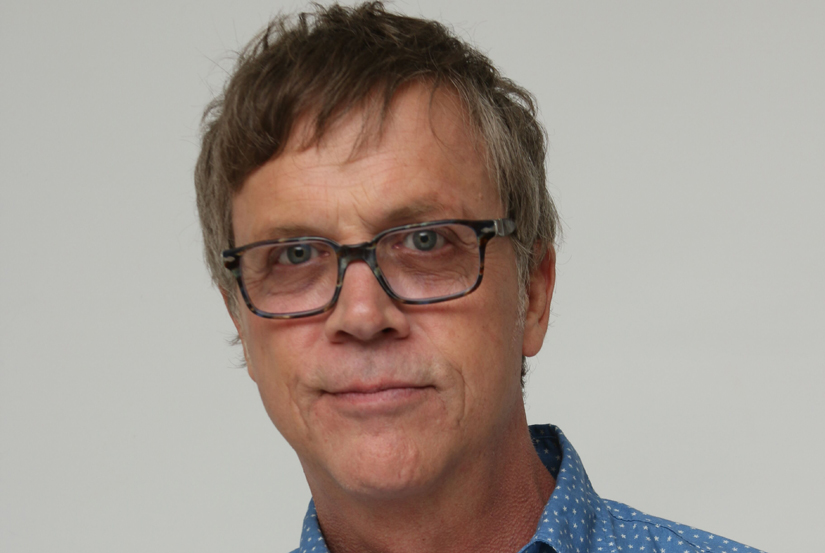
- Golden Globe Awards
Todd Haynes
Carol, Todd Haynes’ highly acclaimed lesbian romance, set in the 1950s, is based on Patricia Highsmith's 1952 daring novel, The Price of Salt, adapted to the screen by Phyllis Nagy. His sixth and most fully realized feature, Carol co-stars two of the best actresses of their respective generations. Two-time Oscar winner Cate Blanchett plays an elegant upper class housewife who meets and begins an affair with a middle-class shop clerk and aspiring photographer, played by Rooney Mara.The movie's opening is an homage to the classic romance, Brief Encounter: "I kind of lifted the opening right out of David Lean's 1945 movie and put it in our script. It begins in a refreshment stand in the train station, and you're introduced to secondary characters in the story, and in the background, you see two people having a conversation. They look like extras in their own film, and then a gossip friend, says 'Laura' and interrupts the conversation. "You realize that an important conversation has been interrupted," Haynes said. "What's so interesting is you're immediately questioning, 'Whose story is this?' And you start to get deeper into her point of view, the narration she conveys to her husband, when she goes back home. And this brief encounter, which ended that day, is retold in real time in the film. It was such a beautiful structuring device because you travel through the entire narrative to explain what that conversation was all about. And then you replay it at the end and you learn the importance of it."However, in Carol, by the time viewers see that scene again, as it occurs in the story, the relationship between the two women has changed. "They've shifted their statuses and identities. Therese, who was this young vulnerable subject, very much in formation, fell in love with Carol, and was hurt and developed defenses and protections. Now she has changed the way she looks and has grown up, and all of a sudden Carol has surrendered a lot and sacrificed her life, reevaluating the value of this special girl," Haynes said.In preparing for Carol, Haynes looked at other films, specifically ones from the era when the film is set, circa 1952, love stories told from a specific point of view. He explained: "I started to think of great love stories, and I thought, 'this is something I haven't approached as a filmmaker.' I always want to give myself an assignment, something I can learn from each time. The best love stories are rooted in the point-of-view of the more woundable, vulnerable, and amorous subject. In this case, that's Therese."While the novel is rooted in Therese's point of view, screenwriter Nagy's scenario (which is nominated for Golden Globe) is more open: "We all of a sudden have access to Carol very freely that we didn't have in the book. I wanted to be conscious of how we enter Carol's world, what that means, but trying to structure the whole film around point-of-view." Known for his rigorous method and attention to detail, Haynes singles out the contributions of his frequent collaborators, cinematographer Edward Lachman and costume designer Sandy Powell, who was Oscar nominated for her work on his 1998 Velvet Goldmine.Throughout his career, Haynes, an auteur in the thematic but not stylistic sense of the term, has explored the complex issue of identity, how diverse individuals take an active role in creating and changing the identity that was assigned to them by dominant culture and mainstream society.These motifs dominated Velvet Goldmine as well as his original biopic of Bob Dylan, I'm Not There, in which seven actors played different aspects of the songwriter's rich life. For Haynes, "Identity is this imposed state that we're supposed to fulfill, and invention, change, mutability, instability, artifice and construction should play no part. We're supposed to find an authentic and organic self that is whole. We espouse those terms and elevate those ideas and values." He elaborated: "The first time I was trying to look at radically different strategies around identity was with Velvet Goldmine, how weirdly rebellious and disquieting that moment was, that bisexual androgynous rallying cry."Haynes holds that, despite progress, "That notion of radical instability in terms of sexual orientation and sexual identity is still uncomfortable today – the broad acceptance of gay, lesbian, bisexual, and transgender – because it's much easier and more legislatively tidy to talk about sexual orientation as something that we're born into, that's biologically determined and stable. Which may be the reason why all of his movies emphasize "the desire and ability to actually change things up." Thus, Carol and Therese very much belong to the same universe of Haynes' other protagonists – mostly outcasts and outsiders, often artists. The director singles out Bob Dylan, who was also somewhat of a "shape-shifter" and "lashed out against" social expectations that seemed too constraining."Emanuel Levy